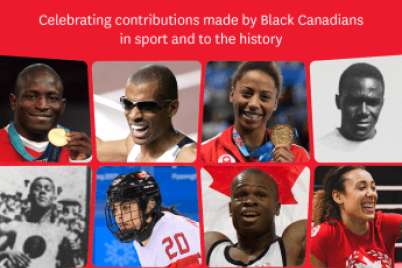
Coach of Canada’s women’s curlers leads by example
As a child growing up in Vancouver, Elaine Dagg-Jackson would do whatever she could to be active and outdoors. Rain or shine, summer or winter, she didn’t care. If she wasn’t in school, she wanted to be playing with her pals.
“As soon as dinner was finished, everyone would run outside and meet,” she recalls with a laugh. “I just wanted to be out every waking moment.”
And active. “We’d play baseball, kick the can, hide and seek, tennis,” she says. “We were always running, jumping, throwing things.
“I didn’t do many organized sports — skating, swimming — but I tried everything.”
Including curling.
Dagg-Jackson, national coach of the Canadian women’s curling team, is at the 2015 Sochi Winter Olympics.
Although Dagg-Jackson didn’t start to curl until high school, it was almost inevitable that she would at least try it. “Everyone in my family played,” she says, and her father, Lyall Dagg, won gold at the World Curling Championships in 1964.
As a teen, however, it wasn’t so much about winning for her. It was about being social and having a good time, she says. “We could hang out with fun people, meet people from other schools, do things after school,” she says.
It wasn’t until she moved to Osoyoos, British Columbia, after high school, and then Kelowna in her early 20s that she started to take curling more seriously.
“That’s when it really clicked for me,” she says.
And how. Since 2003, she has been the Canadian national coach and Olympic coach for the women’s team. She has coached at 16 world championships and four Winter Olympic Games. (Sochi will be her fifth Olympics.)
Now 58, Dagg-Jackson credits a lifetime of being active for giving her skills that go far beyond just physical fitness. “You learn confidence and decision-making. You have to sometimes form a plan quickly, and be spontaneous and creative,” she says. “It’s about teamwork and sharing, being productive.”
And how to fine-tune a family calendar. Along the way, she has had two children, now grown, who are also very active: skiing, curling, waterskiing, lacrosse.
Did they learn that from Mom? Probably, she says with a laugh. “You can be inspiring, but you have to show the way, too,” she says.
“My biggest fear was that, ‘What if they weren’t exposed to whatever their gift was supposed to be? What if they have a gift and you don’t expose them to whatever it is?”
She laughs as she says it, but she’s serious, too. Life’s short, she knows; her own father died when she was young, but not before driving home the importance of doing your best, always, at whatever you try to do.
“He taught us to be the best at whatever we do,” she says. “There’s no excuse for not doing your absolute best, always.”
Image © Canadian Curling Association





